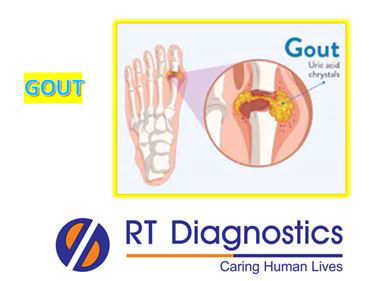URIC ACID:
Uric Acid is synthesized from the nitrogen-containing compounds in the cells which are known as PURINES. This test evaluates uric acid level in the blood or urine for detecting excess uric acid in a condition called GOUT. This test suggested during prognosis for monitoring chemotherapy and kidney stones.
CLINICAL INFORMATION :
This test is usually done for altered levels of uric acid in the blood. If too much accumulation of uric acid remains in the blood it leads to a condition known as hyperuricemia. This condition can lead to the formation of uric acid or urate crystals in the joints causing a pathology known as Gout (a form of very painful arthritis) and also these can accumulate in kidneys to form renal stones. This test is suggested in patients with symptoms of gout such as intense pain and swelling around one or more joints (usually affects the big toes) causing lingering discomfort, signs of redness due to inflammation. Other associated tests include a kit method, colorimetric, spectrometric methods, etc.

General instructions:
Sample Requirement: Specimen - Blood sample drawn from the vein (or) Urine Sample (24 Hours). Test Preparation: None.
NOTE - Sample for specimen collections may vary based on the patient’s condition/cases according to the patient’s presenting complaints/signs or symptoms:
SPECIMEN REQUIREMENT (Special or Rare Cases) - As instructed and guided by Physician / Clinician / Pathologist / as per Laboratory’s requirements, according to procedures and protocols.
This Multi-Specialty Clinical Referral Laboratory “RTDIAGNOSTICS” provides precise and accurate tests with an extensive range of testing services to the medical centers to help in the diagnosis and identification of pathology in the test specimens for infectious diseases and also to evaluate the function of organ systems of the patient. It prevents further complications and helps to stabilize and restore health to near normalcy at the earliest without delay.



